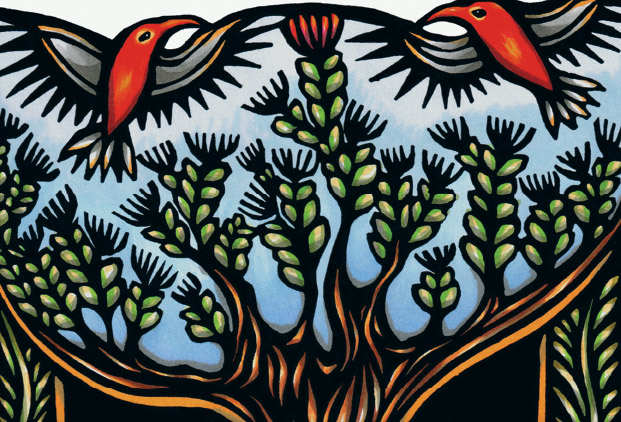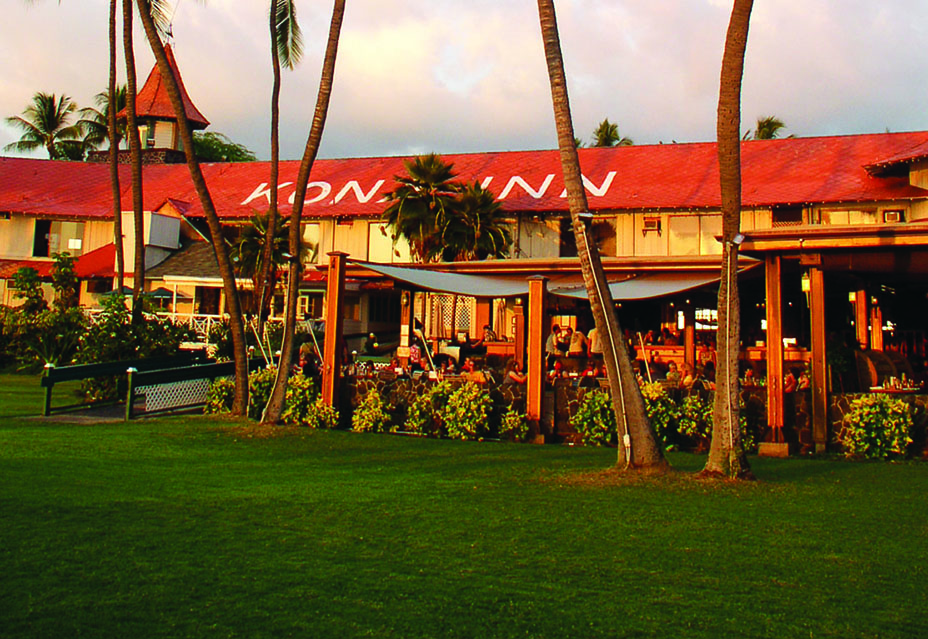Building a Home Hawaiian-Style
By Mike Moore
When someone dreams of living in Hawai’i, they usually picture a home overlooking a white, sandy beach and swaying coconut palms, with a view of sparkling, crystal-blue waters. In reality, Hawai‘i offers such a diversity of landscape and climate zones—like no other place on earth—that imagining an island-style dream home becomes a bit more challenging.
Is there a distinctive, Hawaiian-style home that captures the true essence of Hawai’i and completes the dream? From modest indigenous roots of unadorned Polynesian tribal structures to the many architectural influences that have swept the world, a myriad of architectural styles can still be found in island buildings. Today’s Hawaiian architecture is primarily a distinctive design tyle characterized by an eclectic blend of western and Asian influences.

Of the many architectural styles found in Hawaii, the plantation design style has been the most enduring. Charles Dickey was the architect most influential in successfully creating the vernacular, plantation design style in the 1920s and 1930s. He achieved this by cleverly adapting the California bungalow style to the Hawaiian culture and climate. The plantation design has an unpretentious simplicity, characterized by board-and-batten or clapboard sidings, large lanais, deep overhangs, and distinctive, high-pitched roofs. Sugarcane and pineapple plantations utilized this style for laborer homesteads. Homes were simple, functional, flexible, and cost-effective. The design style has retained a tremendous charm and can be found in its contemporary interpretation today.
How important is this regional style? Just the mention of Cape Cod, Santa Fe, or Santa Barbara conjures up images of a vernacular architecture anchored in neighborhoods and scenic landscapes. Our fondest memories in life are places we enjoy visiting or living in that are reminders of a larger context–a neighborhood, a town or a city–creating a true sense of community. Occasionally you’ll see a homeowner transplanting a style from elsewhere into the landscape of their new home, only to find that it looks out of place.
Unfortunately, a single successful home will not leave an enduring favorable memory without being placed in the context of a distinctive, regionally established architecture. At its very essence, good Hawaiian-style design is timeless; it shelters the soul, stirs the senses, and elevates the spirit. Family or “ohana” unity is encouraged with a central gathering place in the form of a great room or multi-living space, including kitchen, dining, and living areas. A Hawaiian-style home can also be a “village” with a unified compound of intimate, individual structures housing different functions. This concept of separate pavilions or “pods” was traditional for early Hawaiians, and also reflects an Asian and other Pacific Rim influences. The compound or village concept breaks down the scale of a larger home and is truly an authentic island solution.
The yearning to create a cohesive community of homes is so overwhelming that most resort properties and exclusive subdivisions establish strict design guidelines to maintain some semblance of aesthetic unity and predetermined quality. Invariably the homes will mirror one another in exterior appearance. The challenge is to offer unity in diversity.
Some key design considerations include establishing a strong connection with the site itself by blending the indoor-outdoor relationship. Expand the sense of interior space by orienting living spaces and lanais to distant views. Large pocket-slider, glass doors successfully connect interior spaces to the exterior. Always situate windows to frame favorable ocean and mountain views, encourage cross ventilation, and introduce an abundance of natural light. A wraparound lanai, generous overhangs, a distinctive roof profile, careful, proportional detailing, compatible, locally-available materials, and natural, eco-friendly finishes strengthen the design vocabulary.

If you successfully implement green design principles, construction expenses can be substantially reduced, the overall design improved, and the many benefits of a sustainable, energy-conscious home enjoyed. Some green ideas include building “lightly” on the land by respecting natural topography and enhancing unique site features. Indoor-outdoor living is strongly encouraged, so consider building a more modest-size home to minimize construction materials and conserve diminishing resources. Besides, an extensive, covered lanai is highly functional and cost effective to build. Careful planning will allow you to phase a home over time as budgetary and functional requirements necessitate. Indoor air quality can improve significantly if healthy, non-toxic materials are specified and the windows and doors are situated to facilitate natural cooling and ventilation.
Green principles also encourage building wisely with an eye toward material lifecycle costs. Protect the exterior wall envelope from the sun or rain and install quality windows, doors, and materials wherever possible. Water conservation and energy savings features should always be considered.
A Hawaiian-style home must endure harsh conditions including hurricanes, floods, earthquakes, salt air, an unrelenting sun and torrential rain. Build a home that has lasting appeal and incorporates materials that withstand the test of time and the forces of nature. It should be robust, durable, and low maintenance. In summary, if you make every effort to architecturally and functionally complement the natural landscape and environment instead of competing with it, the essence of a true, Hawaiian-style home can be yours.
Design it right; then build it well. Your dream home is an investment, so why not make it a good one! ❖
Mike Moore grew up on the Big Island, where his father helped launch the Natural Energy Lab. He has practiced as an architect, construction manager and developer. He has been a successful entrepreneur and creative visionary for various business ventures and is president of Hawaiian Bungalows, LLC. It is a design-build service helping its customers build innovative, value driven homes that are responsive to the environment while implementing green principles and features. Particular emphasis is placed on capturing the true essence of Hawai’i regionalism with distinctive design styling.


